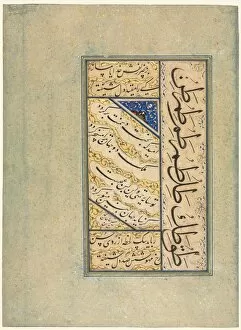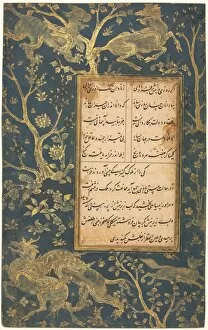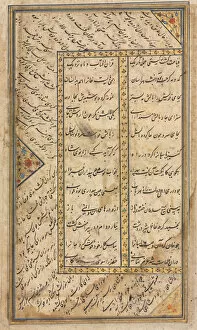1501 1722 Collection
"1501-1722
For sale as Licensed Images
Choose your image, Select your licence and Download the media
"1501-1722: A Journey through Persian Art and Literature" Step into the world of Persian art and literature with a collection of captivating works from the years 1501 to 1722. Delve into the rich tapestry of stories, poems, and illustrations that have stood the test of time. One such tale is "The Story of Nushirwan and his Minister, " a timeless fable that explores themes of wisdom, justice, and loyalty. As you immerse yourself in this narrative, let your imagination soar like falconers twill weaving amid rose bushes. This exquisite artwork from 1650-1699 invites you to get lost in its intricate beauty. In another piece titled "Princess with Wine Bottle and Cup, " we catch a glimpse of royal indulgence during the late 16th century. Created by an unknown artist between 1550-1600, this painting captures both opulence and mystery as it leaves us wondering about the story behind this princess's intoxicating encounter. Shah Tahmasp I takes center stage in yet another masterpiece from around 1575. Seated amidst a breathtaking landscape, he exudes power and grace while leaving us longing for more details about his reign as ruler. The anonymous creator has skillfully captured Shah Tahmasp I's essence through their brushstrokes. Imagine embarking on a picturesque picnic in the mountains as depicted by Muhammadi (Iranian) in the mid-16th century. This single-page illustration transports us to an idyllic scene where nature intertwines with human joy – a moment frozen in time for eternity. As we explore further into these artistic treasures, we stumble upon Persian verses from Jami's Haft Awrang (Seven Thrones). Dating back to the mid-1500s, these delicate words transport us back to an era when poetry was revered as one of life's greatest pleasures.


















